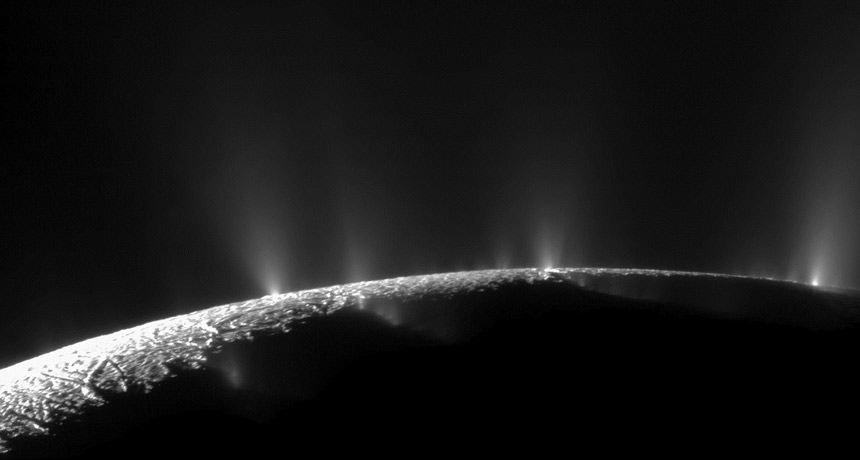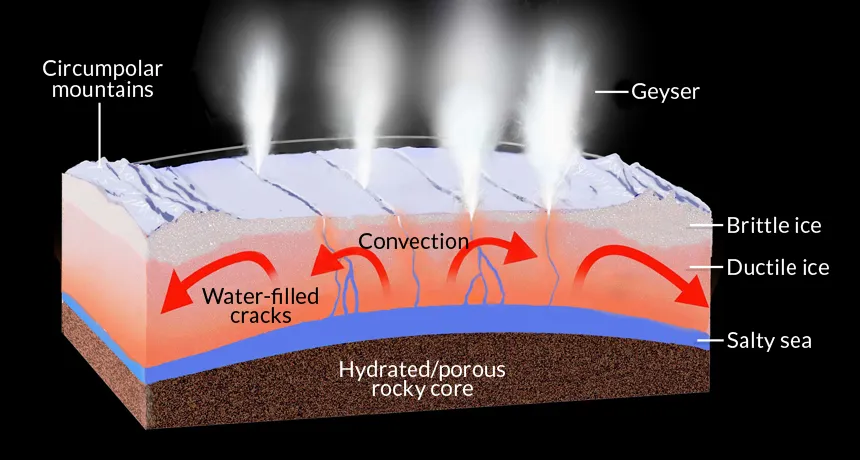Saturn moon’s geysers draw water from subsurface sea
Study suggests space probes can directly sample an extraterrestrial ocean

SEA SPRAY Water from a subsurface sea on Enceladus blasts through cracks in the moon’s icy shell, in a picture taken by the Cassini spacecraft.
JPL-Caltech/NASA, SSI








